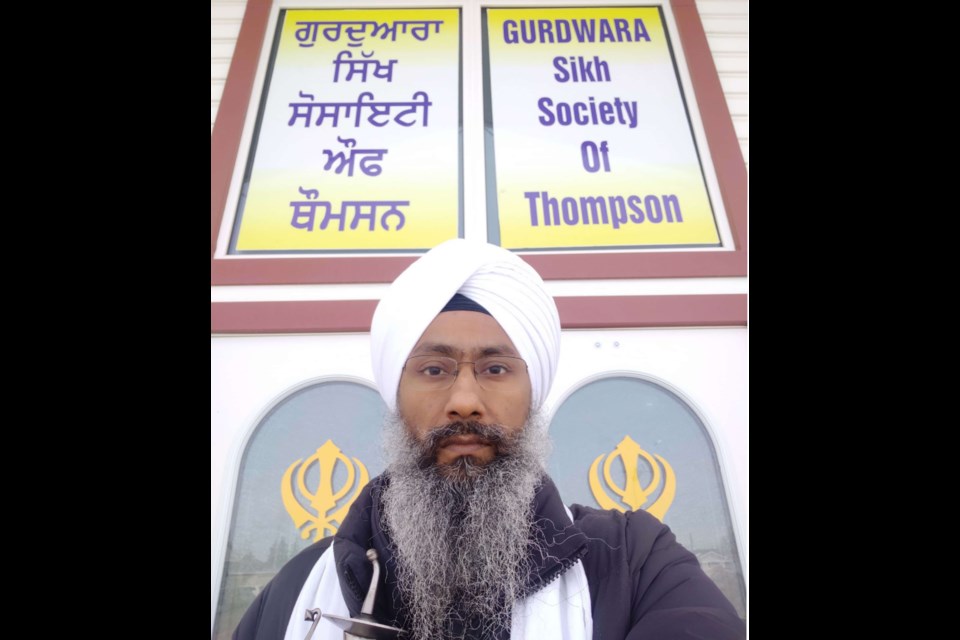Vaisakhi has a great significance in the history of Sikhs as in year 1699 AD on Vaisakhi day, Sahib-e Kamaal Sri Guru Gobind Singh Ji ( tenth soul of Sri Guru Nanak Sahib, the founder of Sikhism) created Khalsa Panth at Takht Sri Kesgarh Sahib, Anandapur Sahib(Punjab). So Sikhs celebrate it as Khalsa Sajna Diwas.
In the congregation of approx.80,000 Sikhs (believers of Sri Guru Nanak Sahib) Sri Guru Gobind Singh Ji came with naked sword and in a roaring voice demanded a head. It was a great test. For the first time in the history of Sikhs, Guru Sahib demanded a head and that also from his own disciples. What has happened to Guru Sahib? All were surprised for a while but after sometime Bhai Daya Ram stood up and offered his head to the true Guru. Guru Sahib took him in the tent and after some time came out and demanded one more head with his blood dripping sword in his hand. He followed the same the same procedure three more times. So he took five heads. Bhai Daya Ram Khatree from Lahore, Bhai Dharam Dass (Jatt from Delhi), Bhai Himmat Rai( Jheeor from Jagannath Puri Odisha), Bhai Mohkam Chand (Chheemba from Dwarka, Gujrat), Bhai Sahib Chand ( Naaee from Bidar, Karnataka) volunteered themselves for beheading. Guru ji beheaded and rejuvenated them by administrating amrit (nectar)and renamed them as Bhai Daya Singh, Bhai Dharam Singh, Bhai Himmat Singh, Bhai Mohkam Singh and Bhai Sahib Singh, respectively.
These five Sikhs were titled as Panj Piare( first five beloved ones of Sri Guru Gobind Singh Ji). Guru ji authorized them to include aspirants in Sikhism by administering amrit.
Upon administering amrit to the five beloved ones Guru Sahib asked them to baptize him in the same manner emphasizing equality between the Guru and his disciples. He also became Sri Guru Gobind Singh from Sri Guru Gobind Rai( his previous name without Singh). Guru Guru Sahib named this new baptism ceremony as Khande ki Pahul.
At this gathering of 1699, Guru Gobind Singh also founded the Khalsa Vani - Waheguru ji ka Khalsa, Waheguru ji ki fateh. He named all his male followers with the title Singh, ( brave like lion) and female followers Kaur (princess of Guru Sahib).
He also founded the principles of Khalsa or the Five Ks.The Five Ks are the five principles of life that are to be followed by a Khalsa. These include Kes with Keski (hair, to be maintained in a turban), which means to leave the hair uncut to show acceptance to the form God intended humans to be and maintain them in a turban; Kangha (specially designed wooden comb for keeping uncut hair Kes in place and cleanl); Kara or iron bracelet (to remind a Khalsa of self-restraint); Kachhehra or knee-length (specially designed) cotton shorts, to be worn by a Khalsa for chastity and readiness to go into battle on horseback; and Kirpan (a sword to defend oneself and the poor, the weak and the oppressed) from all religions, castes and creeds.
He also announced a code of discipline for his Khalsa.The four prohibitions or mandatory restrictions for Khalsa of Sri Guru Gobind Singh Ji are:
- Not to disturb the natural growth of hair;
- Not to eat meat;
- Not to cohabit with a person other than one's spouse;
- Not to use tobacco, alcohol or any type of drugs.
So it's a combination of virtue and strength. Guru Sahib designed a Sikh as a Saint Soldier personality which can be said as morally good strong person.
Person from any religion, country, sex, caste, creed can become a Khalsa of Sri Guru Gobind Singh Ji by getting Khande ki Pahul ( the only way to be a Sikh) from the Panj Piaras and following the path shown by great true Gurus in Sahib Sri Guru Granth Sahib ji.
Kanwaljit Singh is the granthi, or clergyman, of the Sikh Society of Thompson’s gurdwara, or temple, which is located on Goldeye Crescent.





